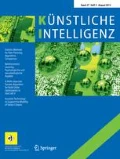Abstract
Sparse coding has become a widely used framework in signal processing and pattern recognition. After a motivation of the principle of sparse coding we show the relation to Vector Quantization and Neural Gas and describe how this relation can be used to generalize Neural Gas to successfully learn sparse coding dictionaries. We explore applications of sparse coding to image-feature extraction, image reconstruction and deconvolution, and blind source separation.




Similar content being viewed by others
References
Aharon M, Elad M, Bruckstein A (2006) K-SVD: an algorithm for designing overcomplete dictionaries for sparse representation. IEEE Trans Signal Process 54(11):4311–4322
Barlow HB (1961) Possible principles underlying the transformation of sensory messages. Sens Commun pp 217–234
Bell A, Sejnowski T (1997) The “independent components” of natural scenes are edge filters. Vis Res 37(23):3327–3338
Bruckstein AM, Donoho DL, Elad M (2009) From sparse solutions of systems of equations to sparse modeling of signals and images. SIAM Rev 51(1):34–81
Candès EJ, Tao T (2005) Decoding by linear programming. IEEE Trans Inf Theory 51(12):4203–4215
Chen SS, Donoho DL, Saunders MA (1998) Atomic decomposition by basis pursuit. SIAM J Sci Comput 20(1):33–61
Comon P (1994) Independent component analysis, a new concept? Signal Process 36(3):287–314
Davis G, Mallat S, Avellaneda M (1997) Greedy adaptive approximation. Constr Approx 13:57–89
Deerwester S, Dumais S, Furnas G, Landauer T, Harshman R (1990) Indexing by latent semantic analysis. J Am Soc Inf Sci 41(6):391–407
Ding C, Li T, Peng W (2006) Nonnegative matrix factorization and probabilistic latent semantic indexing: equivalence chi-square statistic, and a hybrid method. In: Proceedings of the national conference on artificial intelligence, vol 21, p 342
Donoho DL (2006) Compressed sensing. IEEE Trans Inf Theory 52(4):1289–1306
Elad M, Yavneh I (2009) A plurality of sparse representations is better than the sparsest one alone. IEEE Trans Inf Theory 55:4701–4714
Engan K, Aase SO, Hakon Husoy J (1999) Method of optimal directions for frame design. In: ICASSP’99: proceedings of the acoustics, speech, and signal processing, pp 2443–2446. 1999
Field DJ (1994) What is the goal of sensory coding? Neural Comput 6(4):559–601
Haykin S, Chen Z (2005) The cocktail party problem. Neural Comput 17(9):1875–1902
Hofmann T (1999) Probabilistic latent semantic indexing. In: Proceedings of the 22nd annual international ACM SIGIR conference on research and development in information retrieval. ACM, New York, pp 50–57
Hoyer P (2002) Non-negative sparse coding. In: Proceedings of the IEEE workshop on neural networks for signal processing XII, pp 557–565
Labusch K, Barth E, Martinetz T (2008) Simple method for high-performance digit recognition based on sparse coding. IEEE Trans Neural Netw 19(11):1985–1989
Labusch K, Barth E, Martinetz T (2009) Approaching the time dependent cocktail party problem with online sparse coding neural gas. In: Advances in self-organizing maps—WSOM 2009, vol 5629, pp 145–153
Labusch K, Barth E, Martinetz T (2009) Demixing jazz-music: sparse coding neural gas for the separation of noisy overcomplete sources. Neural Netw World 19(5):561–579
Labusch K, Barth E, Martinetz T (2009) Sparse coding neural gas: learning of overcomplete data representations. Neurocomputing 72(7–9):1547–1555
Labusch K, Barth E, Martinetz T (2011) Robust and fast learning of sparse codes with stochastic gradient descent. IEEE Trans Sel Top Signal Process 5(5):1048–1060
Labusch K, Barth E, Martinetz T (2011) Soft-competitive learning of sparse codes and its application to image reconstruction. Neurocomputing 74(9):1418–1428
LeCun Y MNIST handwritten digit database, NEC research institute. http://yann.lecun.com/exdb/mnist/
Lee H, Battle A, Raina R, Ng AY (2007) Efficient sparse coding algorithms. Adv Neural Inf Process Syst 19:801–808
Lewicki M et al. (2002) Efficient coding of natural sounds. Nat Neurosci 5(4):356–363
Martinetz T, Berkovich S, Schulten K (1993) “Neural-gas” network for vector quantization and its application to time-series prediction. IEEE Trans Neural Netw 4(4):558–569
Martinetz T, Schulten K (1991) A “neural-gas network” learns topologies. Artif Neural Netw I:397–402
Olshausen BA, Field DJ (1996) Emergence of simple-cell receptive field properties by learning a sparse code for natural images. Nature 381:607–609
Paatero P, Tapper U (1994) Positive matrix factorization: a non-negative factor model with optimal utilization of error estimates of data values. Environmetrics 5(2):111–126
Pati Y, Rezaiifar R, Krishnaprasad P (1993) Orthogonal matching pursuit: recursive function approximation with applications to wavelet decomposition. In: Proceedings of the 27th annual asilomar conference on signals, systems, and computers
Rebollo-Neira L, Lowe D (2002) Optimized orthogonal matching pursuit approach. IEEE Signal Process Lett 9(4):137–140
Shashanka M, Raj B, Smaragdis P (2007) Sparse overcomplete decomposition for single channel speaker separation. In: IEEE international conference on acoustics, speech, and signal processing, vol 2, pp 641–644
Villmann T, Hammer B (2009) Functional principal component learning using oja’s method and Sobolev norms. In: Advances in self-organizing maps—WSOM 2009, pp 325–333
Zetzsche C, Barth E, Wegmann B (1993) The importance of intrinsically two-dimensional image features in biological vision and picture coding. In: Digital images and human vision, pp 109–138
Author information
Authors and Affiliations
Corresponding author
Additional information
Supported by the DFG, grant number MA 2401/2-1.
Rights and permissions
About this article
Cite this article
Hocke, J., Labusch, K., Barth, E. et al. Sparse Coding and Selected Applications. Künstl Intell 26, 349–355 (2012). https://doi.org/10.1007/s13218-012-0197-0
Received:
Accepted:
Published:
Issue Date:
DOI: https://doi.org/10.1007/s13218-012-0197-0




